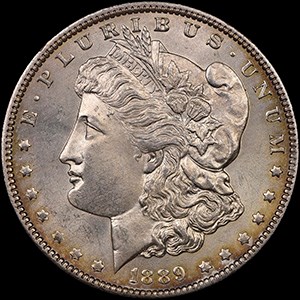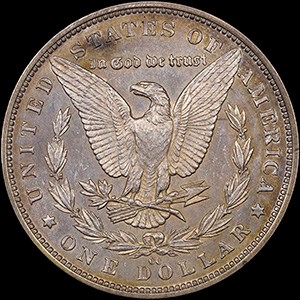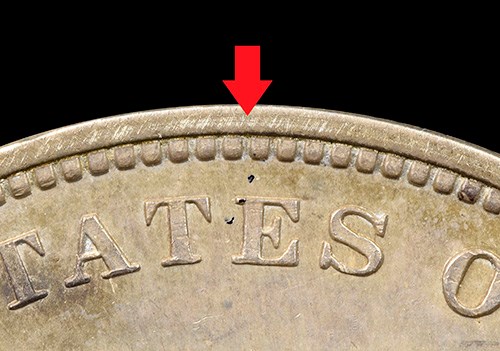Counterfeit Detection: 1889-CC Morgan Dollar with Joined Halves
Posted on 8/8/2017
NGC graders identify coins with added or altered mint marks each and every day. These alterations are seen so often that we devoted an entire article to them last year, which can be found here.
While that article covered the most frequently seen mintmark alterations—removed, added, and embossed mintmarks—NGC graders recently identified an altered coin that did not fit into any of those categories.
 |
 |
|
1889-CC Morgan Dollar with joined halves Click images to enlarge. |
|
The 1889-CC Morgan dollar pictured above appears to be an attractive coin in About Uncirculated condition worth well over $10,000. In reality, however, it is an alteration made from two coins carefully cut and then joined together to create a different date and mintmark combination. In this case, the obverse and edge of an 1889 Philadelphia dollar were combined with the reverse of one of the more common CC-mint Morgan Dollars, most likely an 1883 or 1884.
 |
|
| A seam can be seen on the rim of the reverse Click image to enlarge. |
|
A careful examination of this coin reveals a seam in the middle of the rim on the reverse. This seam was created when the forger removed the entire reverse of the 1889 Philadelphia dollar from within that line and replaced it with a reverse removed from a more common Carson City issue. The diagonal scratches on the rim are the counterfeiter’s attempt to remove evidence of the joint.
Overall, the counterfeiter did a decent job—this is one of the more deceptive counterfeits seen recently at NGC. Even the weight of this piece, 26.48 grams, is pretty close to the official weight of 26.73 grams. However, that difference is actually two and a half times the Mint’s weight tolerance of +/- 0.097 grams.
A good way to check for authenticity issues is to try to match the coin to known dies. Morgan Dollars, for example, have been extensively cataloged by die variety (called “VAMs” after the comprehensive study by Leroy Van Allen and A. George Mallis). If your coin does not match any known die pairs for the date and mintmark combination, you either have an important discovery or a counterfeit. Either way, this should cause you to more intensely scrutinize the coin.
If you are ever unsure of a coin’s authenticity, you can either submit it to NGC for authentication or purchase a coin already certified by NGC. All US and world coins graded by NGC are guaranteed to be genuine.
Interested in reading more Counterfeit Detection articles? Click here.
Stay Informed
Want news like this delivered to your inbox once a month? Subscribe to the free NGC eNewsletter today!
Add Coin
Join NGC for free to add coins, track your collection and participate in the NGC Registry. Learn more >
